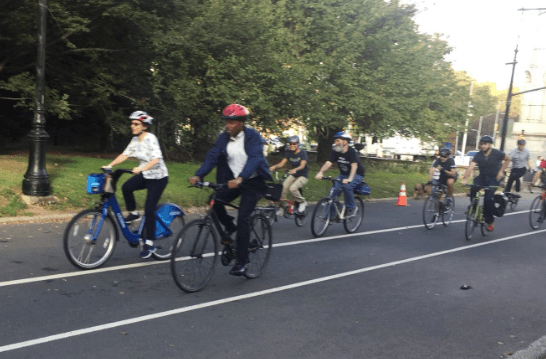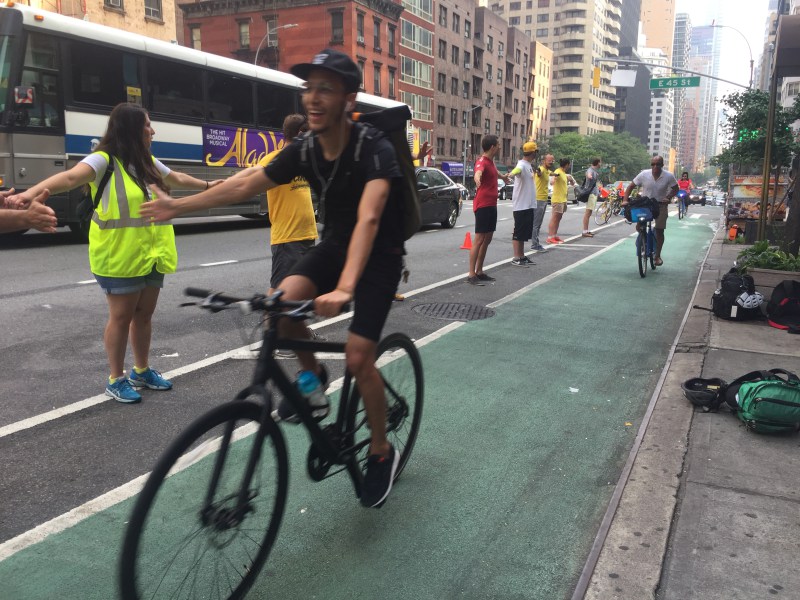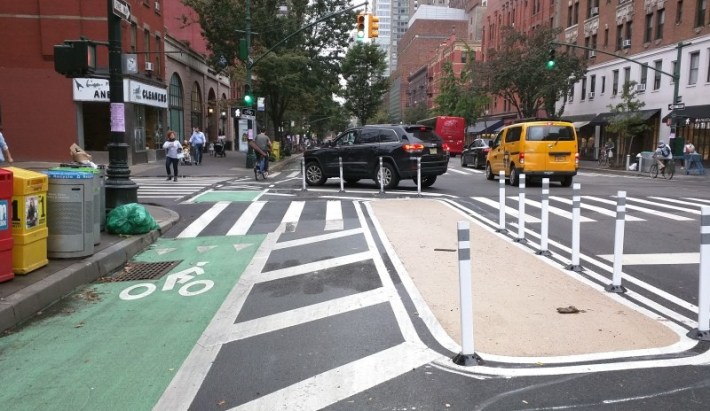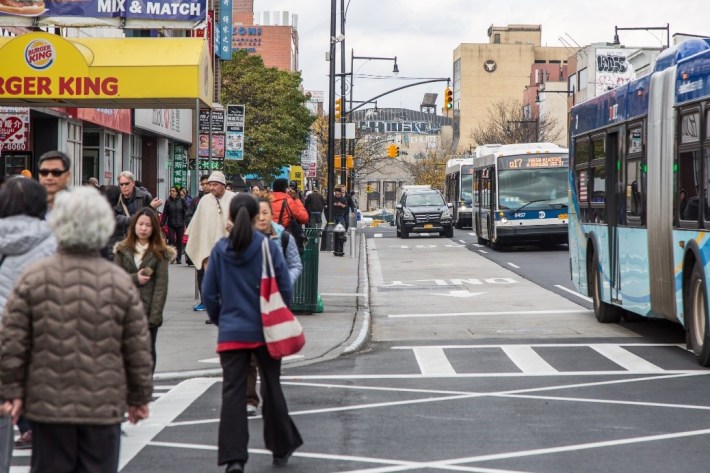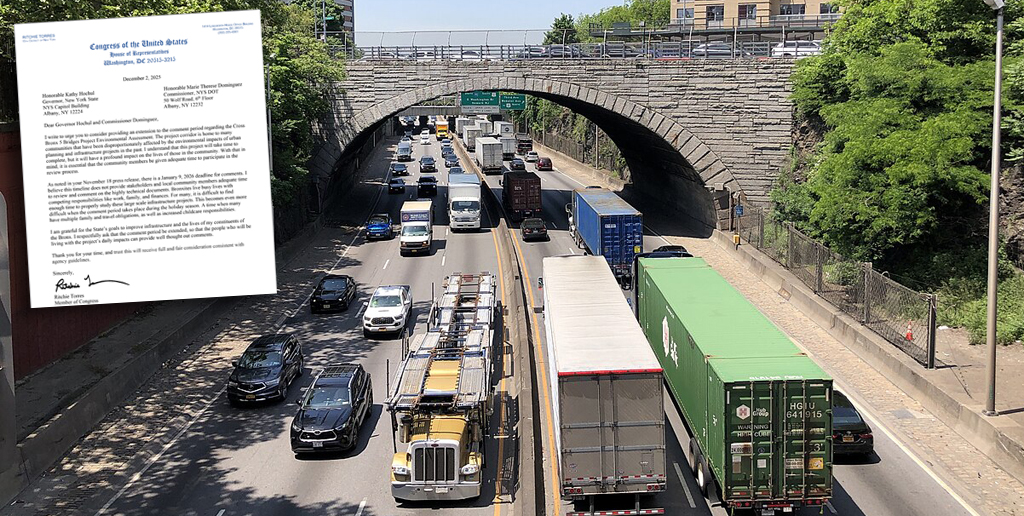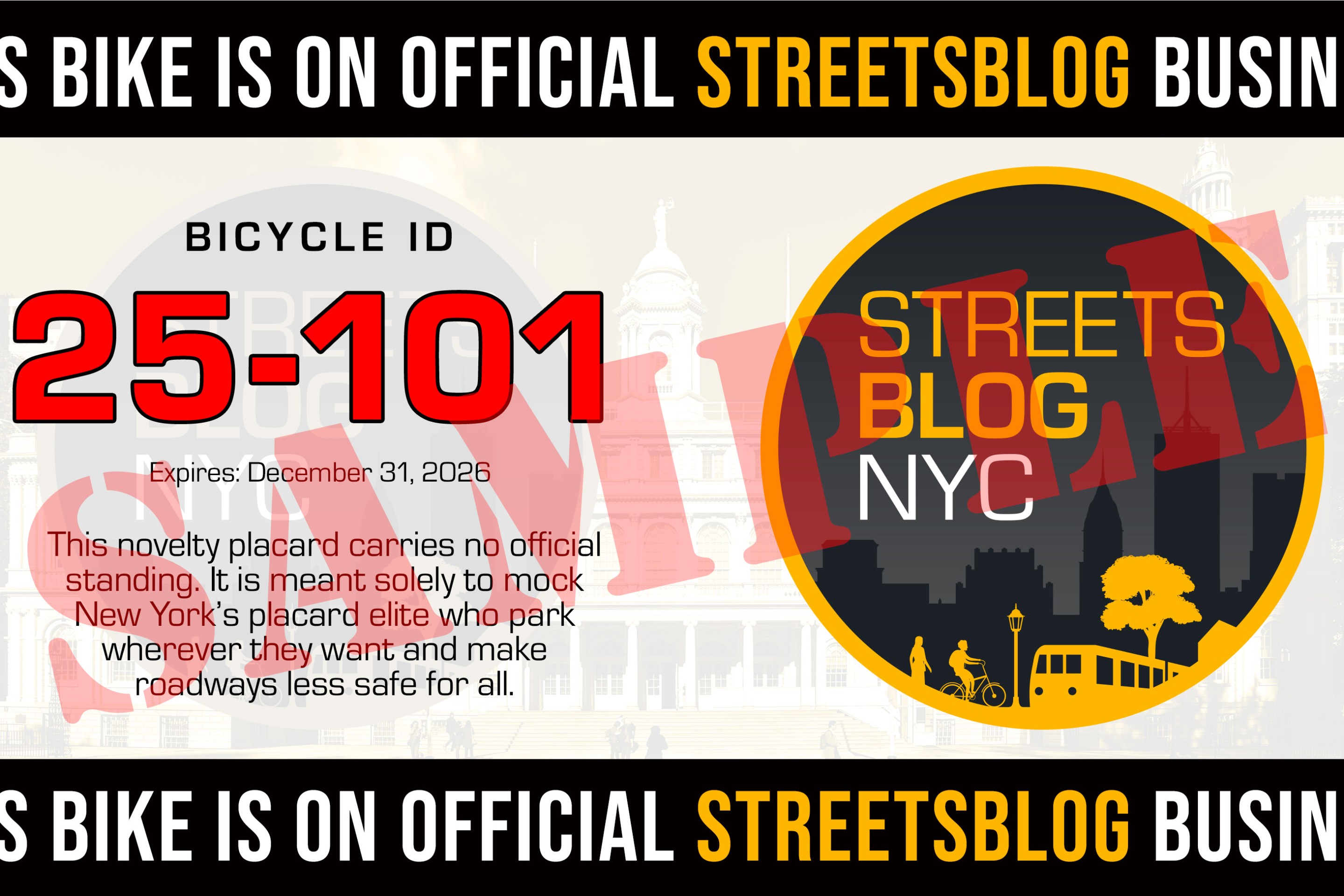Happy holidays, Streetsblog readers. The people have spoken, the polls are closed, and the awarding of Streetsies has commenced.
Good things did in fact happen in 2017. With this installment we celebrate the good things that happened to NYC streets.
Enjoy, and if you want to help Streetsblog advocate for more good things in 2018, drop a tip via our secure online donation form.
Best Pedestrian Project
With a new street surface and some well-placed planters, granite slabs, and markings, DOT turned the block of Broadway between 24th and 25th streets into a pedestrian priority "shared space," roughly doubling the size of contiguous public space at Flatiron Plaza. Motor vehicle access is allowed, but it's clear that people behind the wheel have to slow down and yield to people on foot.
DOT's venture into shared space proves the concept can work well in NYC. The narrow canyons of the Financial District, crowded Midtown streets, and residential blocks should all be candidates for similar treatment going forward.
Best Bicycle Project

After a year out of the top spot in this category, the Queens Boulevard bike lane is back. Which stands to reason, because each new bike lane segment on the most important street in Queens makes the previous segments more useful. This year's phase of the Queens Boulevard project extended the redesign east to Rego Park, and there are now nearly four miles of safe bikeways connecting the neighborhoods of central and western Queens. This corridor figures to be a contender in 2018 too, with upgraded connections to the Queensboro Bridge and an eastward extension to Union Turnpike in the works.
Best Bus Project
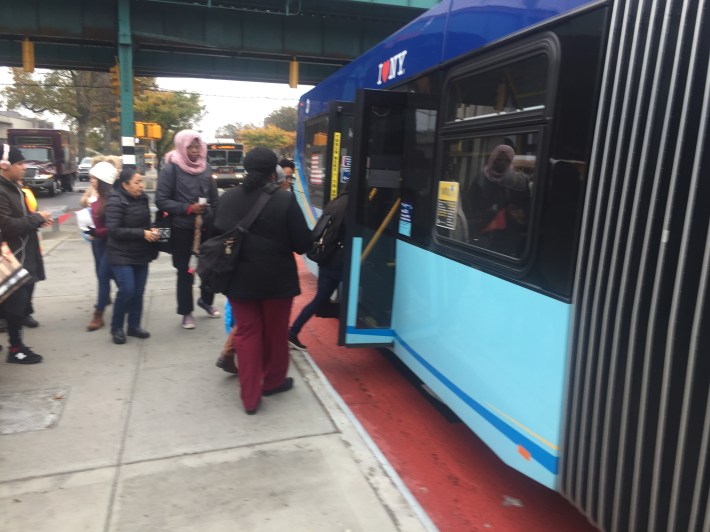
You can count on Streetsblog readers to vote for the bus project that helps the greatest number of riders, and this year was no exception. But not only does Woodhaven Boulevard Select Bus Service speed up trips for 30,000 passengers each day (a few thousand more than the runner-up, Bx6 SBS), the project also made one of the widest, deadliest streets in the city safer for walking. Bigger pedestrian medians and simpler vehicle turning patterns complement the bus lanes and faster boarding. Thanks to this project, one of New York's nastiest car sewers works a lot better for people who walk and ride the bus.
Bonus points to DOT for seeing the project through despite a vocal contingent of NIMBYs, including State Senator Joe Addabbo, bent on propping up unfettered motoring to the greatest extent possible. The city will need more of that assertiveness to deliver the full package of transit upgrades slated for Woodhaven Boulevard, which the Department of Design and Construction will get to sometime in the 2020s.
Best Addition to the DOT Toolkit
DOT's new semi-protected intersection design promises deliverance from the stress of "mixing zones," which have become the bane of New York's protected bike lane network. Unlike the mixing zone design, which appears to make turning motorists feel entitled to bully their way through the path of passing cyclists, the new intersection template engenders slower, safer, more courteous turns.
It's always good to see DOT refine its bikeway design toolkit, in this case prompted by Reed Rubey, Willow Stelzer, and other volunteers with TransAlt. So far DOT has piloted the semi-protected intersection in small batches, but the sooner a large number of intersections get converted to the new design, the better.
Most Intensively Used Square Footage
Main Street in Flushing is a major transit hub, a downtown commercial center, and the most crowded pedestrian environment in New York except for Times Square. With the addition of wider concrete sidewalks, four busy blocks of Main Street went from dangerously overcrowded to intensely bustling.
Best New Advocacy Tactic
There's a reason people-protected bike lanes are sweeping the nation. Yes, they get people's attention. But they also happen to be a lot of fun. It's a safety demonstration, a show of solidarity, and a street party rolled into one.
Best Report
The February release of Bruce Schaller's report, "Unsustainable? — The Growth of App-Based Ride Services and Traffic, Travel and the Future of New York City," settled one of the great vexing questions in contemporary New York City transportation policy. How much do Uber, Lyft, and company contribute to rising traffic congestion in the Manhattan core? Quite a lot, it turns out. Schaller's bulletproof analysis and his recent follow-up, "Empty Seats, Full Streets," will help guide traffic management policy in 2018 and beyond.
Favorite Streetfilm
The classic Streetfilm format shows a city that already has something to brag about -- a safe all-ages bike network, a high-capacity surface transit system, a downtown full of car-free streets. This year the people's choice for top Streetfilm was different. Transform Your Streets With Tactical Urbanism shows cities that are still figuring out how to shift away from the automobile, with all the political and bureaucratic hesitation that entails. "Tactical urbanism" cracks open the process of change and prods cities to act, as Clarence captures so well:
Best Reason to Look Forward to 2018
Runner-up: The redesign of Brooklyn's Fourth Avenue with protected bike lanes could set a new standard for curbside bikeways on major two-way streets. Recently reelected Council Member Carlos Menchaca deserves huge credit for championing the idea early on.
Winner: The Prospect Park loop will be off-limits to private car traffic all day, every day starting January 2 (but really, the morning of Friday, December 29, will be the last time traffic shortcuts are allowed). It's the culmination of several advocacy campaigns spanning multiple generations. Soak it in -- conclusive wins like this don't come along every year.
